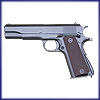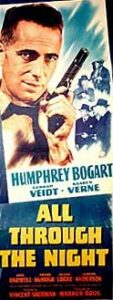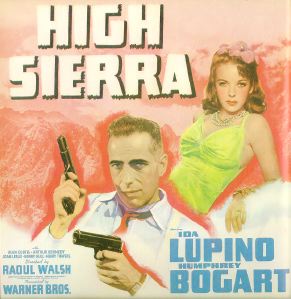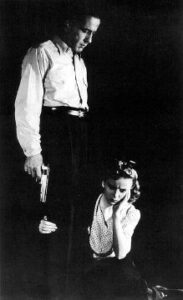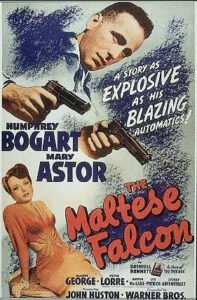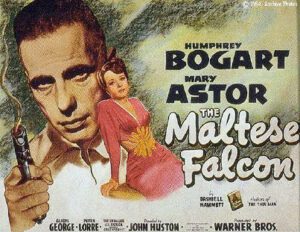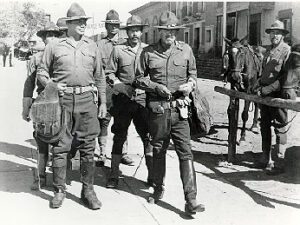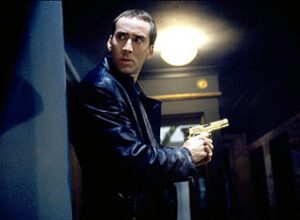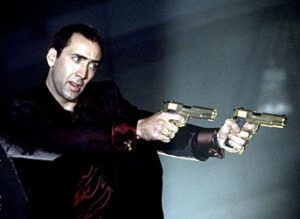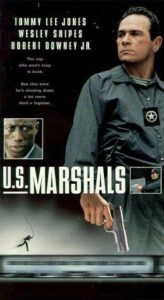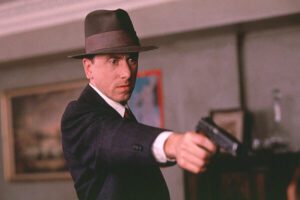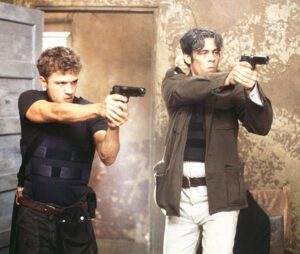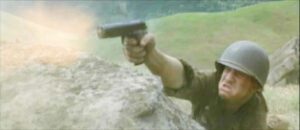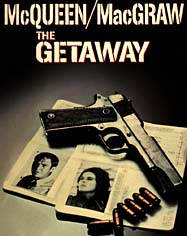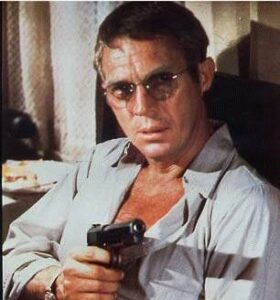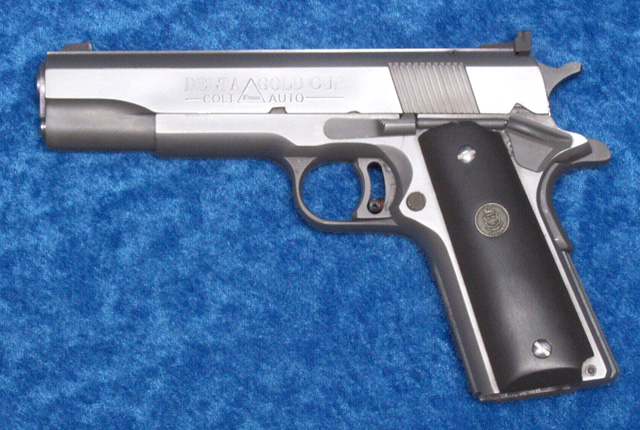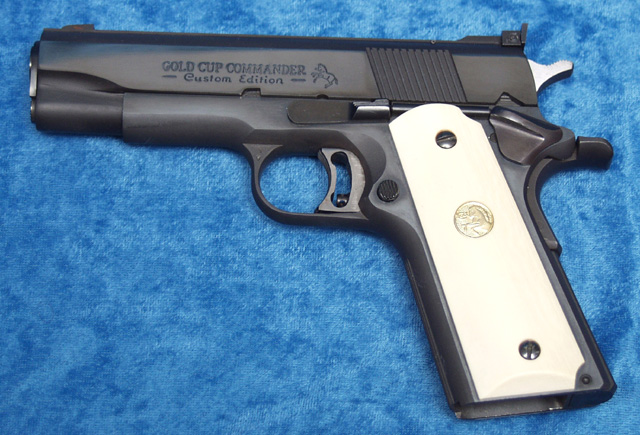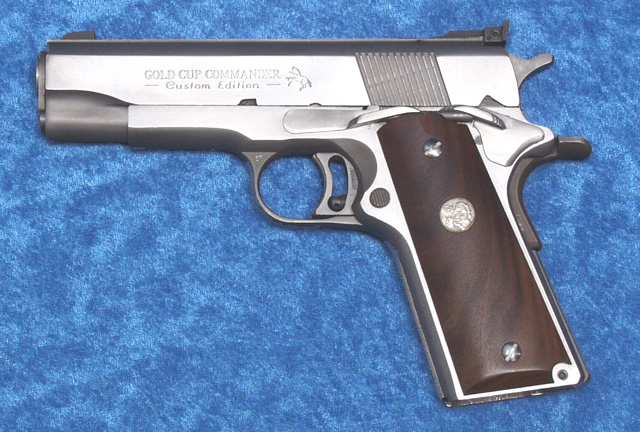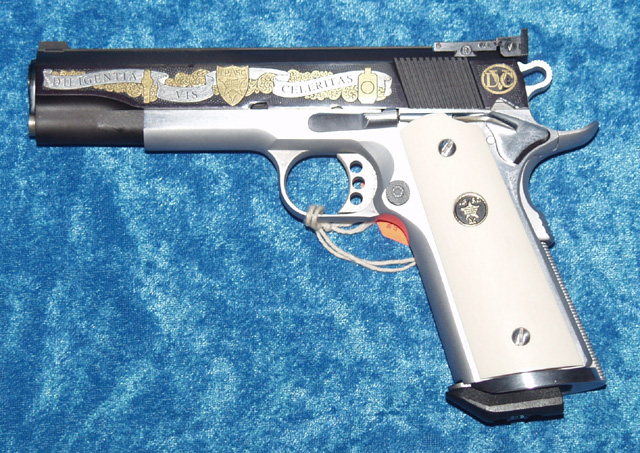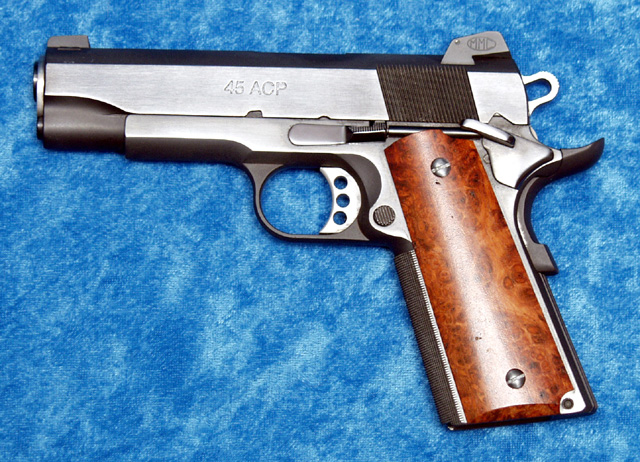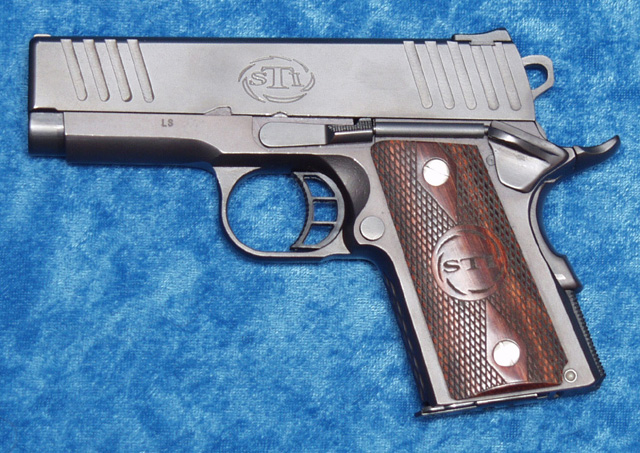The Mystique of the 1911 Pistol
I have held and fired a lot of pistols and there are a lot of very good ones out there which aren’t 1911-pattern pistols. But when you pick up a 1911 pistol, especially a government issue or mil-spec, you get a vibe. The gun has a certain aura, a feeling about it that is unique among handguns, a mystique. So what is it about this particular handgun which gives it the enduring appeal and singular identity among handguns that it possesses?
Elements of the Mystique
The Testosterone Factor – “.45” is synonymous with “big, powerful pistol.” The gun goes off with authoritative thunder, a “boom” not a “crack.” Just the sight of this gun evokes images of Sgt. Alvin York single-handedly capturing a regiment of Germans accompanied only by his M1917 Enfield rifle and his M1911, of John Wayne in “Sands of Iwo Jima”, Navy SEALS, and the Texas Rangers. Our villains are there too: the Dillinger Gang with their 1911 accessorized with the front grip and magazine of a Thompson submachine gun, Dutch Schultz, and Bonnie and Clyde. It’s a big pistol. It looks big and feels solid. It launches a big 230 grain bullet and can deliver over 550 ft.lbs. of energy on impact.
Individuality and Customization – Any new-in-the-box 1911 is really a custom kit. The 1911 is to handguns what the `57 Chevy is to hotrods or the P-51 Mustang to air racers, the ultimate platform for customization. Pistoleros inclined to tinkering eventually find their way to the 1911. Aftermarket parts abound for this pistol, and you can make it into almost anything your heart desires. The design requirements for the pistol specified a gun which could be serviced in the field with a minimum number of tools, and it can be completely disassembled using only its own parts. Consequently, the 1911 is very accessible from a mechanical point of view. It is relatively easy to install custom parts or modify existing ones. Few 1911s remain completely stock for very long, unless they are those models which include the custom features usually added to the mil-spec guns, such as extended beavertails, custom triggers and hammers, full length guide rods, and decorative grips. For those who seek a personalized sidearm, the 1911 is one of the best platforms from which to begin.
Accuracy – The 1911 is one of the most accurate autoloaders ever built. The original government issue 1911s were built with generous tolerances in order to keep them functioning in combat conditions. Hence, they were reasonably accurate, but not outstanding. Gunsmiths learned to tune the military surplus guns for greater accuracy by tightening the slides and adding match grade barrels and bushings. Newer incarnations of the 1911 are built to tighter tolerances, yielding pistols with outstanding accuracy. The long 5″ barrel of the Government Model is also an asset, but pistols with shorter barrels also display great accuracy. In my own opinion, a modern 1911 is generally a more accurate handgun than the .45 offerings of leading makers such as SIG, Glock, H&K, and Smith & Wesson.
The single action trigger of the 1911 is its glory and curse. The 1911 must be cocked, either by hand (not recommended) or by racking the slide. You cannot cock the hammer by pulling the trigger as is done with a double action revolver or autoloader. For this reason, the pistol must be cocked and locked with the manual safety on in order to be ready to fire quickly. Browning’s 1911 prototype did not have the manual safety at all. Browning felt that the grip safety was sufficient, but the Army disagreed and directed Browning to add the thumb activated manual safety on the side of the frame. Even with the double safety configuration, the Army remained jumpy about the action and trained soldiers to carry the pistol hammer down on an empty chamber. See “The Conditions of Readiness.”
This action, the source of so much anxiety, is also the basis for the pistol’s accuracy, speed, and consistency. Since there is no double action linkage to add resistance and catches, the trigger pull of the 1911 is very short and light, requiring only about 5 lbs. of pressure to fire. Every shot is the same since there isn’t the long, hard, cocking pull of the first shot of a DA/SA auto. The result is better trigger control and consistency.
Power – The .45 ACP is a proven stopper. The only other handgun cartridge which has demonstrated stopping power comparable to the .45 ACP is the 125 grain .357 Magnum jacketed hollowpoint. The Army moved to the .45 caliber bullet after the failure of the .38 Long Colt to stop the Moro tribesmen in the Philippines. Contrary to popular myth, the .45 ACP was not issued in the Philippines during the Moro uprising, but the experience with the Moros led the Army to specify the .45 for its new autoloader. The Moros used religious ritual and body binding to put themselves into an altered state of consciousness prior to battles, and the .38 Long Colt would not adequately stop these highly motivated warriors. Moving forward a century, law enforcement is again looking to the brute force stopping power of the .45 ACP to deal the current generation of criminals, many of whom use drugs which numb the senses, suppress the response to systemic shock, and repress the survival instinct. While ballistics mavens may argue the merits of their particular pet cartridges, few would argue that there is a better pistol cartridge than the .45 ACP. It has been decisively stopping fights for longer than most of us have been on this troubled little planet.
Cocked, locked and ready to rock – From Chuck Taylor, “The controls of the 1911 are well-located for quick, efficient use and require no fine motor skill to operate, a major advantage when the adrenaline is pumping through your veins like a high-pressure pipeline. In fact, the slide stop/release, magazine release button and thumb safety of the M1911 are so easy to operate that no additional training is required. Even when the gun is being presented from a holster, proper training technique incorporates disengagement of the thumb safety at the appropriate time. As practical firearms go, we’ll search far and wide for something as easy to use effectively, particularly under stress, as Old Ugly.”
The Last of the Cowboy Guns – In some ways, the 1911 is the last of the cowboy guns. It was, after all, a product of the 19th Century, designed as a sidearm for horse-mounted cavalry, and carries the single action legacy of the old cowboy six guns from Samuel Colt. Only a few other autoloaders adopted the single action trigger such as the Llama .380, the Colt Government .380, and the Browning Hi-Power, Browning’s last, and perhaps, most elegant design. Other pistol designers did not adopt the grip safety and tended to follow the double action/single action pattern being used in French and German pistols built by FN, Walther, and Mauser. The 1911 launches a big, slow bullet, hearkening back again to the six shooters of the fabled Old West. The Europeans, by way of contrast, tended to favor the smaller and faster cartridges such as the .32, .380, and 9mm Luger.
Tenure – Some designs capture our imaginations and become archetypes by virtue of their success and staying power: The Single Action Colt Revolver, the Snubnose .38 Special, the 30-30 Winchester lever-action Rifle, The AK-47, the Winchester12 gauge pump shotgun, the bolt action Mauser rifle, and the M-16. The 1911 is one of these enduring design archetypes. I know of no other firearm introduced in 1911 which is still in production virtually unchanged. Today, scores of manufacturers produce 1911-pattern guns, and many more make their living through customizing and servicing the venerable hand cannon. The 1911 is an extremely durable design and it is not uncommon to find 1911’s with a service life of 150,000 rounds. Perhaps we like the things which endure, those things which have been battle tested and validated time and time again. Maybe it’s just a really good design that we like. Regardless of the explanations, the shear staying-power of the 1911 .45 ACP is an element of its mystique.
Tenure, history, individuality, power, ease of use, and accuracy–these things make up the mystique of the 1911-pattern pistol. Is it the best? It is if you like it the best. For me, it’s the most enjoyable handgun to shoot and study of them all.

